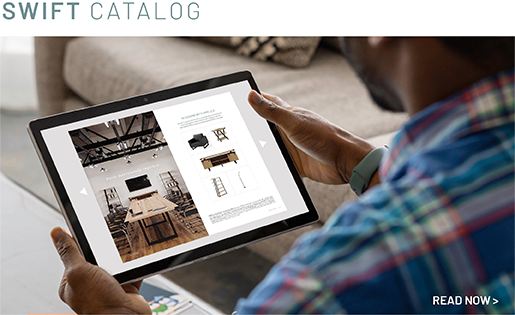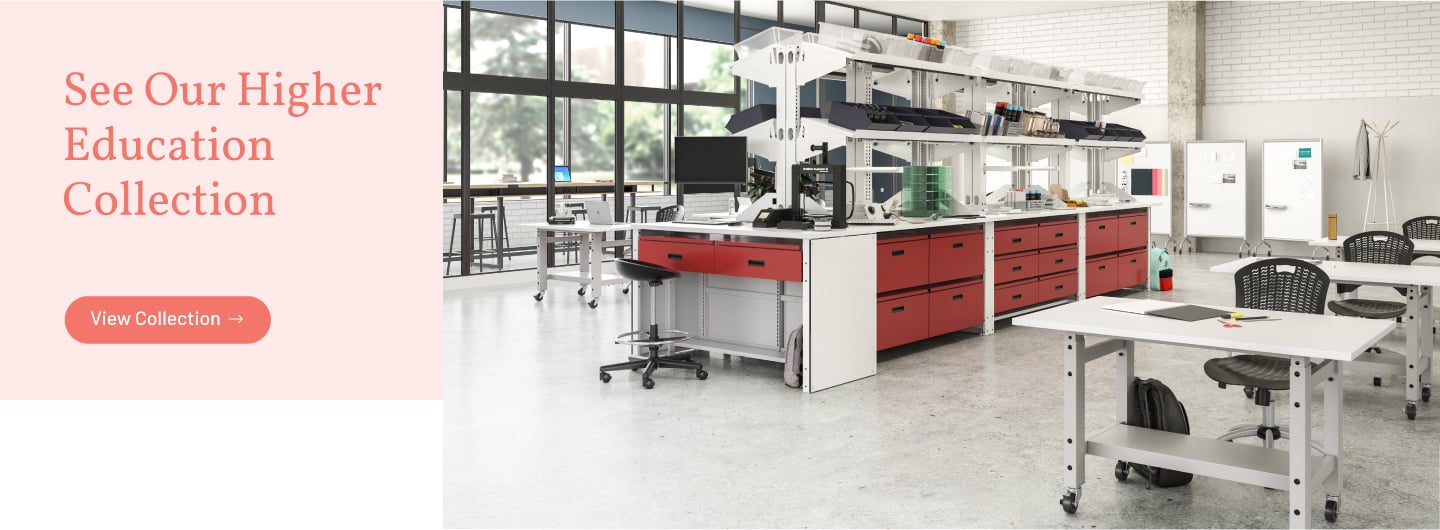Create Higher Education Spaces Designed for Attraction

Top 3 Trends Shaping the Future of Higher Ed Spaces
It is no secret that the pandemic has wreaked havoc on higher education institutions over the last two years, specifically with its detrimental impact on enrollment numbers. According to data from the National Student Clearinghouse Research Center, undergraduate enrollment declined by nearly 3.5% in the fall of 2021 from the previous year. With less access to international students, the ability to learn online globally, and a significantly stronger job market competing for fresh talent, universities must strategically up their game to woo students back. One area to concentrate on is space design. Here are the top 3 trends influencing learning environments and how appropriate design can ensure students thrive in higher education settings moving forward.
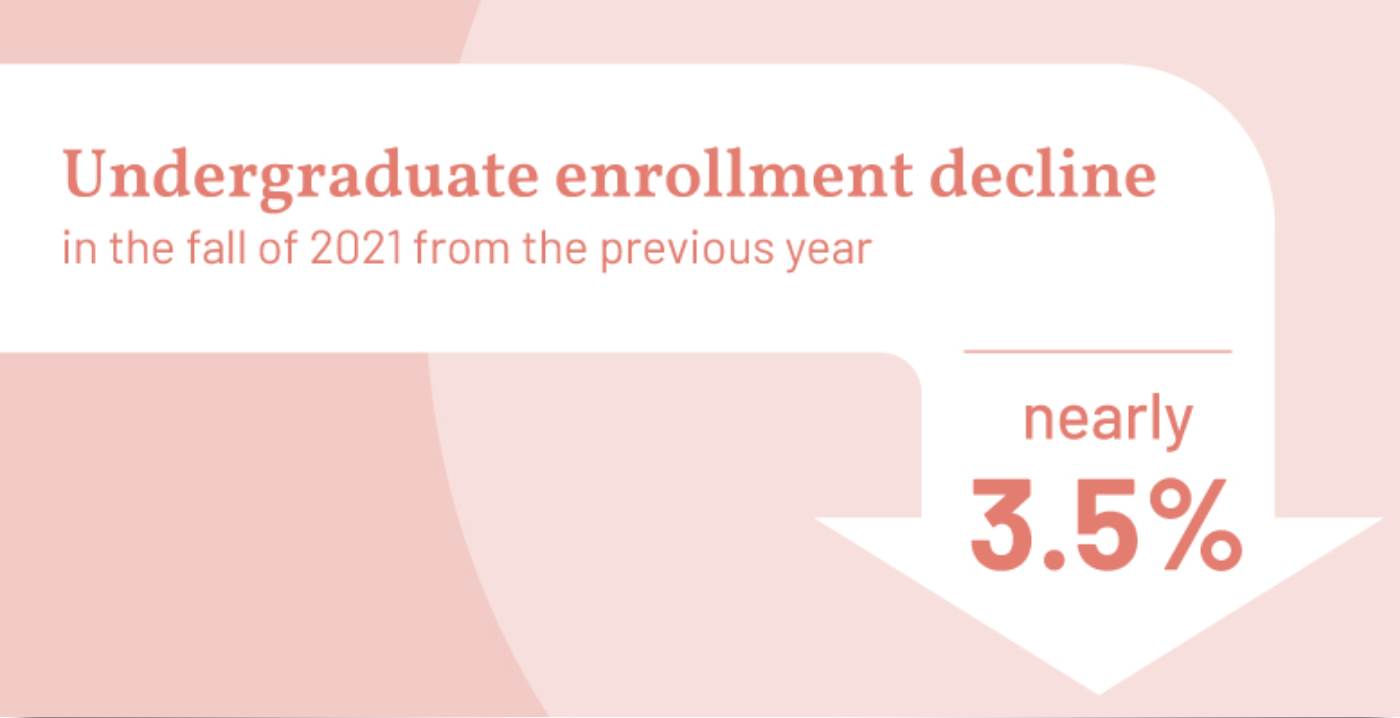
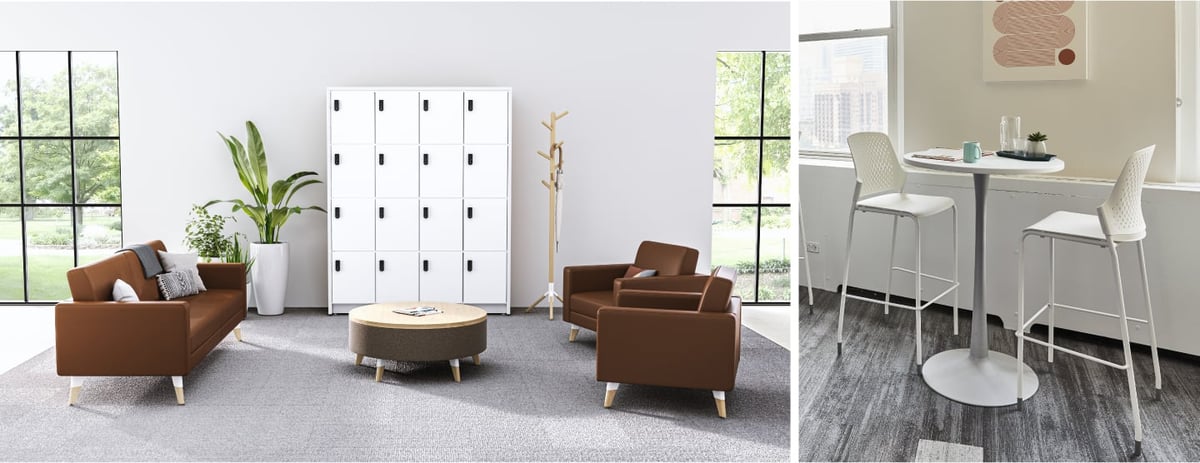
Offer Choice and Flexibility
Students today have had to adapt to an unprecedented crisis, so it will be imperative for learning institutions to create spaces that respond to their ongoing social and emotional needs. While this generation of students is known for always being plugged in, they will also need areas that allow them to reset and recharge. Offer plenty of opportunities that foster connection with others (after all, the appeal of in-person learning revolves around live human interaction) while also providing calming, private spaces where students can decompress and practice mindfulness.
Give Students Ample Spaces
Create communal spaces with ample surfaces that include standing-height tables and sitting-height tables, along with different types of soft seating and stools to give students a choice in the postures for interaction with others. Make private nooks readily accessible throughout these common areas for use as individual study zones or as a retreat as needed. By giving students ample spaces to be solitary or social on their terms, universities, and technical schools are providing students with the autonomy and balance they crave.
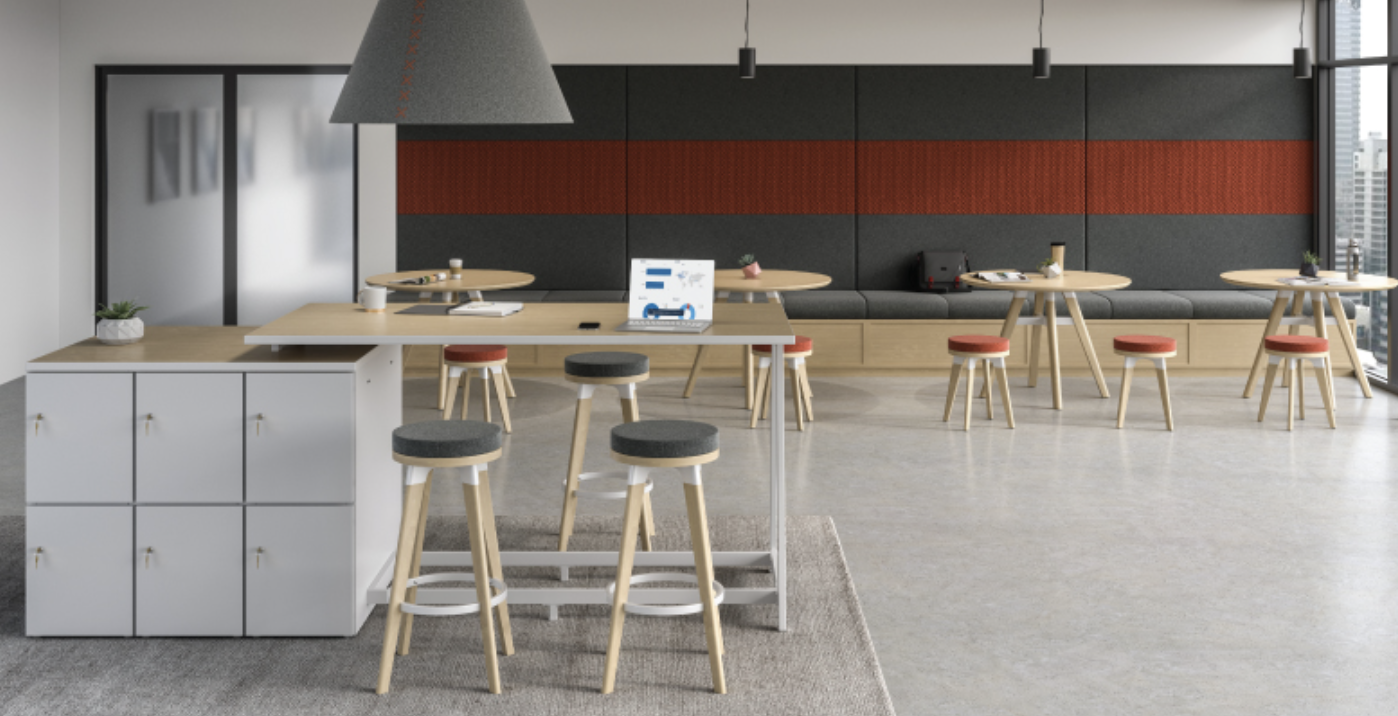
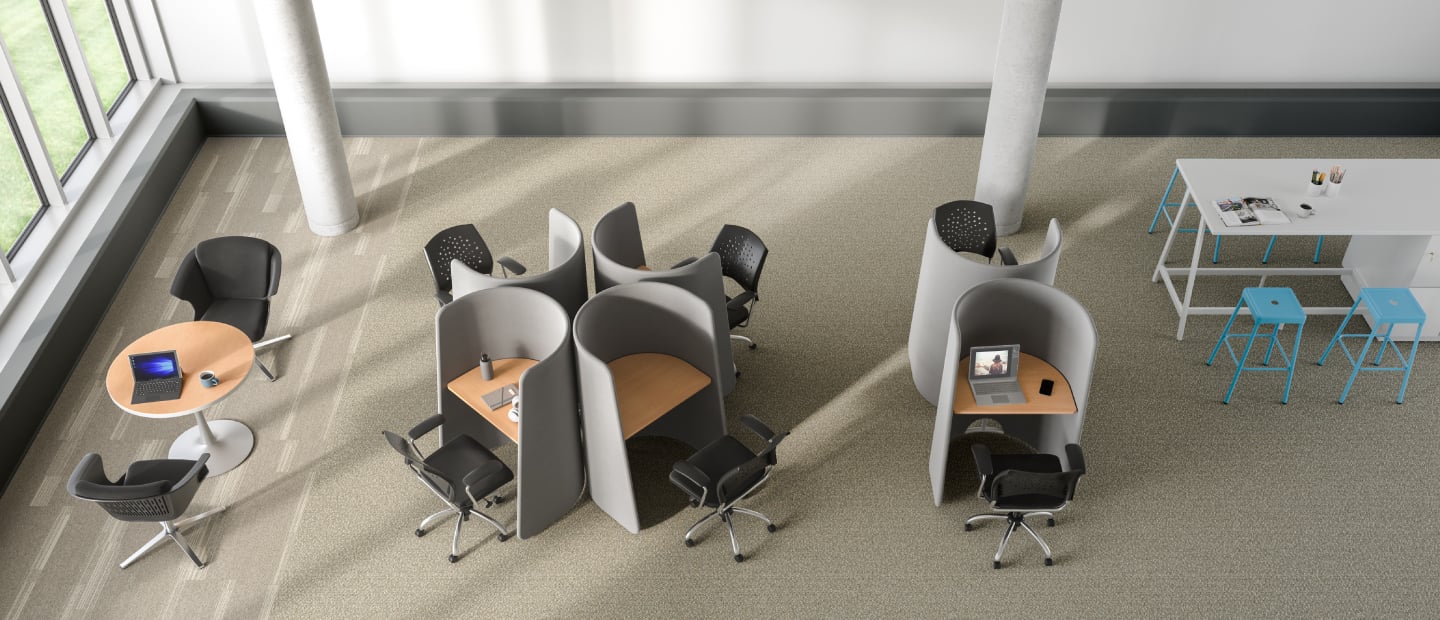
Emphasize Active Learning
Online learning is not going away, but it is reducing the need for the lecture-style format with in-person instruction. Moving forward, higher education facilities will need to implement more active learning opportunities to create more value for the campus experience. Collaborative activities are vital to active learning, and spaces must be designed to accommodate interaction and meaningful discourse amongst students. Flexible furniture and display tools that can be quickly accessed and adapted will better support the evolving needs of multiple learners. This can be achieved by incorporating easily moveable seating, reconfigurable tables, and mobile whiteboards within the classroom to encourage ideation.
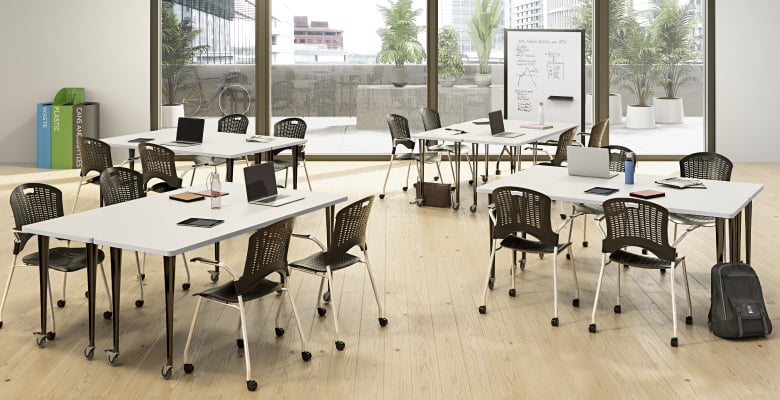
Hands-On Learning
Integrating makerspaces within campuses also allows for more hands-on learning and creativity. To encourage engagement, incorporate durable, modular furniture that can withstand heavy tinkering and be rearranged as needed. Provide robust storage solutions that can house all the supplies needed for invention and experimentation.
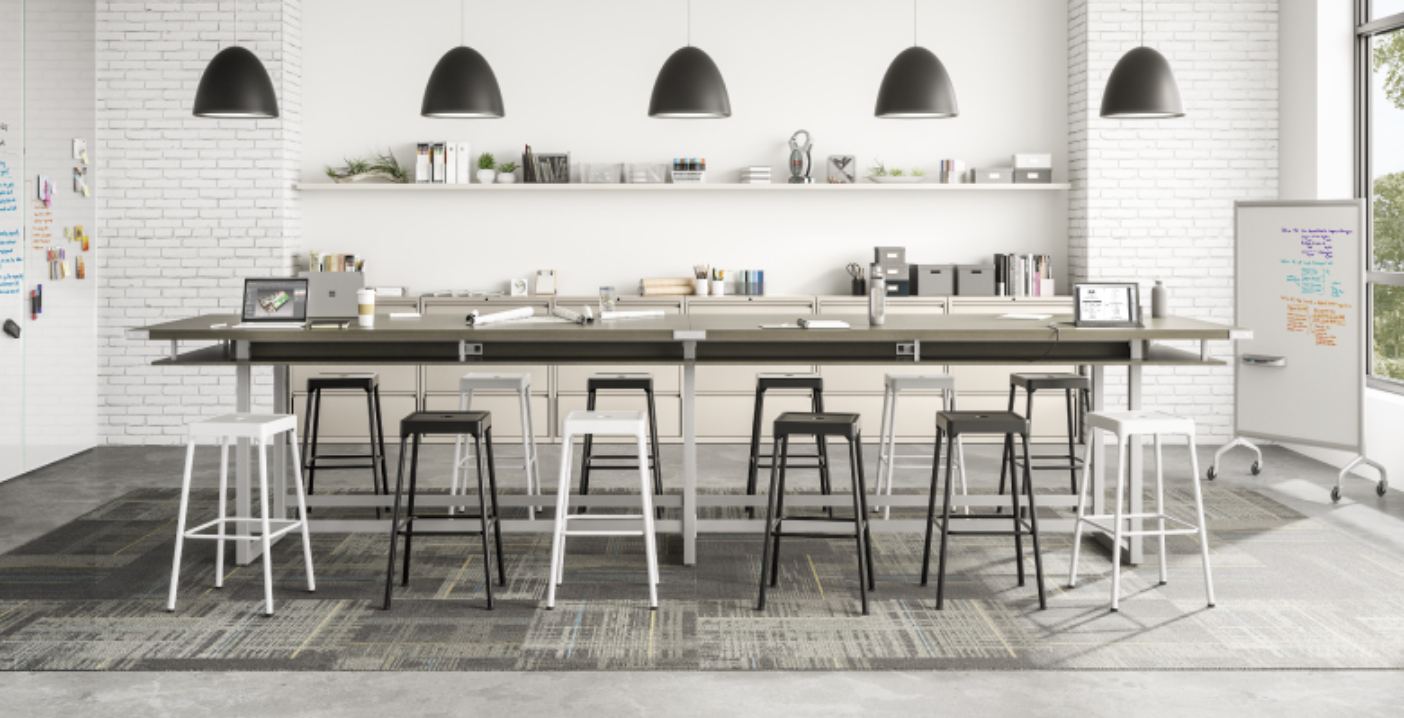
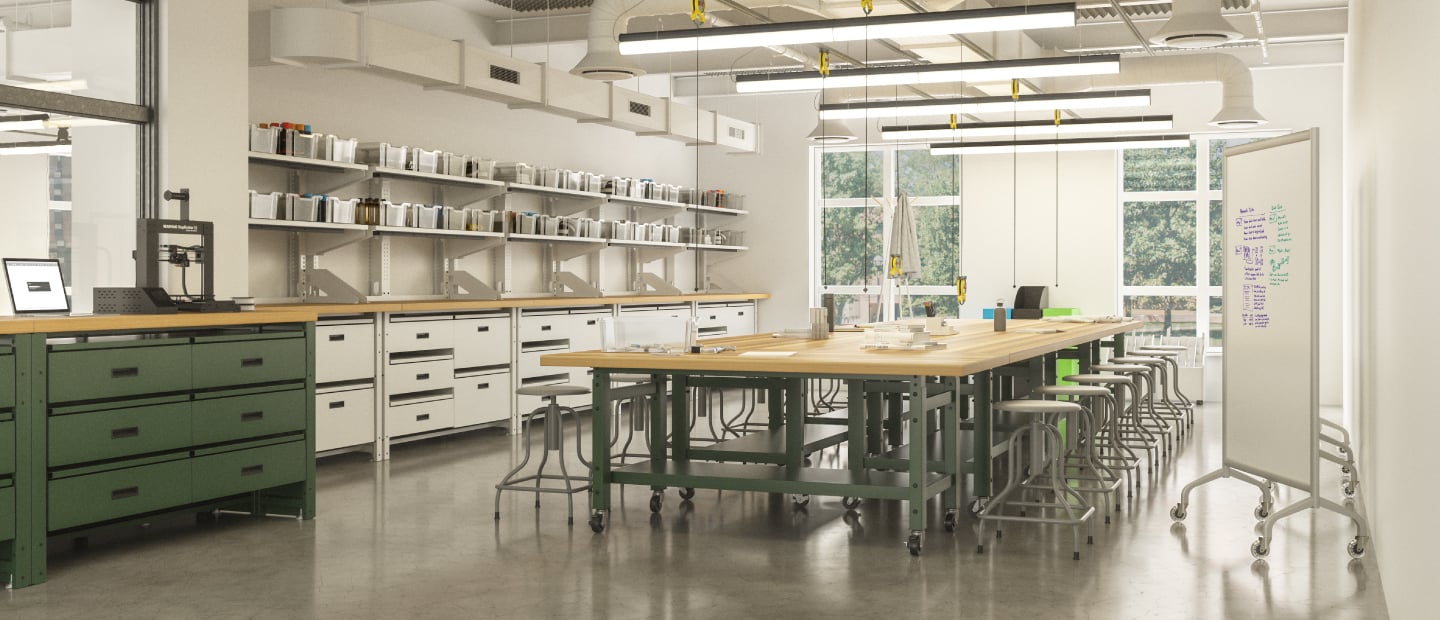
Address Relevant Real-World Skills
The ongoing workforce talent shortage has exacerbated the demand for practical, real-world skills, such as problem-solving, critical thinking, teamwork, and people management. Universities and technical colleges must now be able to help students acquire these skills to better prepare them for the workplace. This will involve creating more spaces to support group-based projects where students will learn to relate to one another and leverage each other’s strengths, just as they would in the real world.
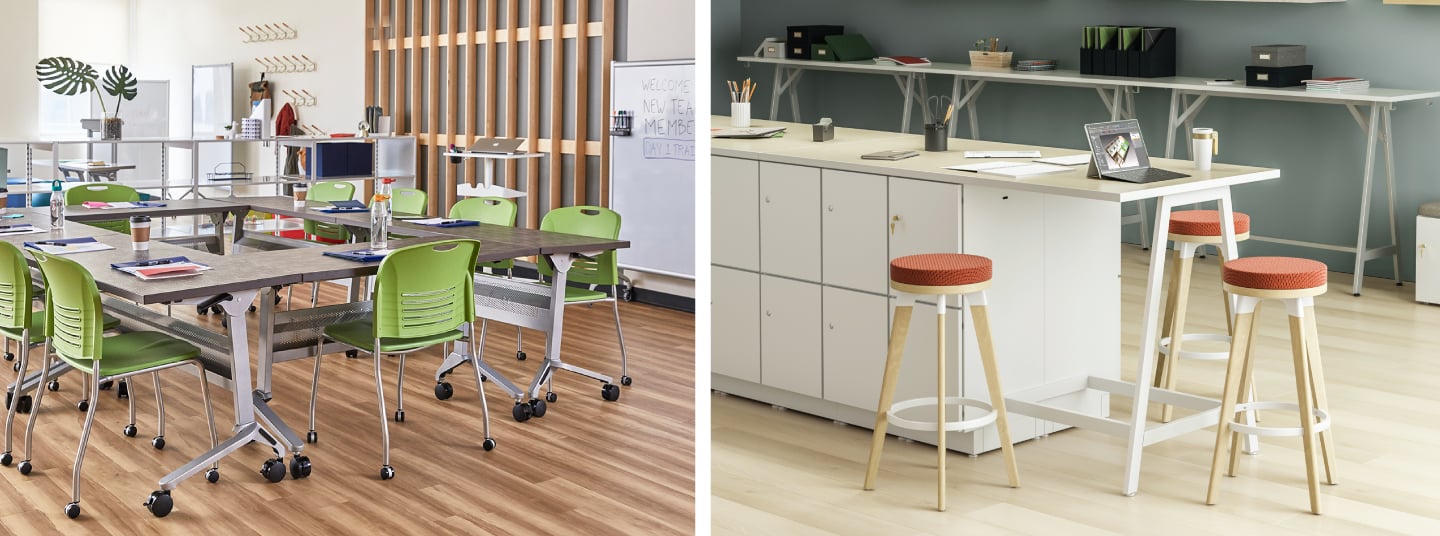
Take Advantage of Underutilized 'Sticky' Spaces
To amplify what is being discovered and taught within the classroom, take advantage of underutilized areas like corridors to create opportunities that extend learning. Furnish these tighter ancillary spaces with durable furniture that supports spontaneous conversation and idea-sharing like stools and smaller footprint standing-height tables.
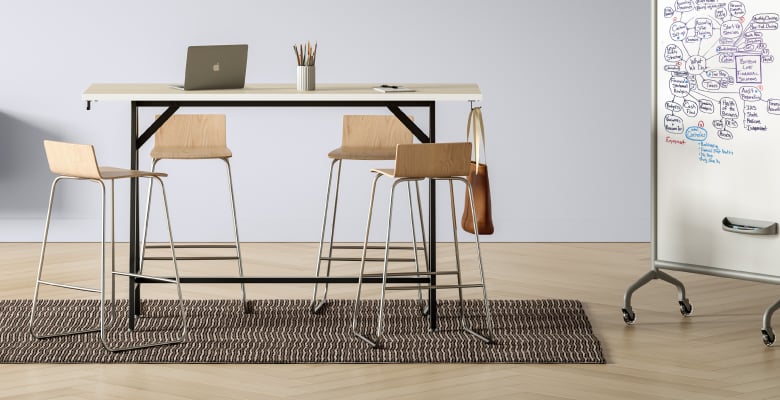
Designate Collaborative Group Spaces
Provide designated collaborative group spaces within libraries and common areas to support project work. Incorporate comfortable seating and durable furniture made with high-performance materials to accommodate frequent use and cleaning. Furnish these spaces with mobile tables and seating that can be rearranged for different group sizes. Also, provide moveable whiteboards, that are multi-purpose to encourage ideation and create space division.
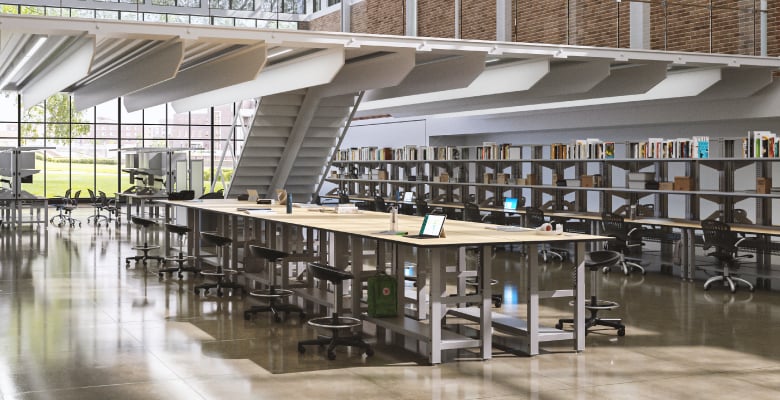
Support In-Person Learning with Inspirational Spaces
Safco offers a comprehensive collection of furniture solutions that enable higher education spaces to better engage students and create a welcoming campus culture. With highly agile and purposeful products that can be acquired quickly and affordably, Safco helps transform learning environments into spaces that attract and inspire.


